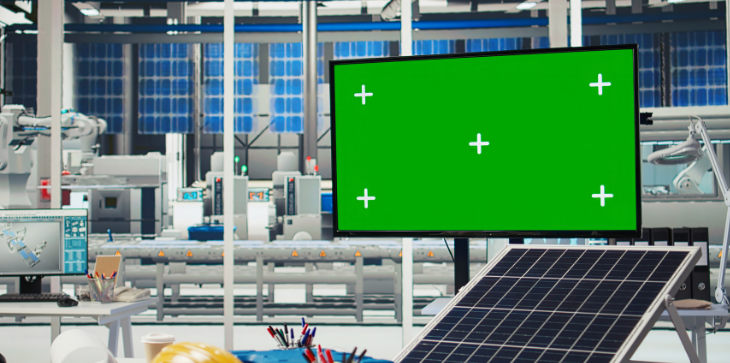In a quiet lab just outside Seattle, a steel cylinder pulses with invisible power. It’s not a nuclear bomb. It’s not a laser. It’s what could be humanity’s best shot at an energy revolution: a fusion reactor.
This isn’t the start of a sci-fi film — it’s 2025, and scientists are working overtime to deliver something humanity has chased for over half a century: limitless, clean power from fusion energy. And for the first time, there’s a real sense we might finally be getting close.
Why Fusion Is So Important Now
Global energy demand is rising — and so are emissions. Despite widespread adoption of solar, wind, and other renewables, fossil fuels still dominate grids in many parts of the world. Clean, reliable, 24/7 power remains a massive challenge.
Fusion offers something radically different: the ability to create massive amounts of energy by fusing atoms — specifically, hydrogen isotopes — without producing carbon dioxide or long-lived radioactive waste.
“This is not just about clean energy. It’s about abundant, secure, independent energy,” says Dr. Karina Yusuf, a fusion policy advisor with the Global Energy Council.
And in 2025, the fusion ecosystem is shifting from government-backed science experiments to commercially driven engineering races.
From Science Fiction to Private Sector Sprint
For decades, fusion research moved at the pace of government labs — slow, methodical, and heavy on theory. That changed after 2022’s landmark fusion ignition at the National Ignition Facility in California. For the first time, scientists got more energy out of a fusion reaction than they put in — even if only briefly.
The result: a tidal wave of venture capital, tech talent, and corporate curiosity.
Today, over 35 private companies are actively developing fusion technology. Some, like Helion Energy and Commonwealth Fusion Systems, have promised working fusion plants before the end of the decade. Others are more cautious, focusing on foundational tech, material science, and control systems.
“We’ve moved from asking if fusion will work to when it will be ready,” says Colin Reyes, CEO of StellarForge, a fusion startup in Texas. “It’s a shift in mindset — and money is following.”
How Fusion Works — And Why It’s Hard
Fusion occurs when light atomic nuclei — like two hydrogen atoms — collide with enough force to merge into a heavier nucleus, releasing enormous energy in the process. It’s the same reaction that powers the sun.
But here on Earth, creating those conditions is incredibly complex. You need extreme heat (over 100 million °C), intense pressure, and precise control of superheated plasma. Two dominant approaches have emerged: magnetic confinement using tokamaks (doughnut-shaped reactors) and inertial confinement using lasers.
The catch? Sustaining a reaction long enough, efficiently enough, and cheaply enough to be useful.
“It’s like trying to hold a star in a box,” says Dr. Yusuf. “The physics work. The challenge is in the engineering.”
2025: A Tipping Point for Testing
This year marks a critical moment. Several companies are poised to run real-world tests of compact fusion reactors. Commonwealth Fusion’s SPARC reactor in Massachusetts is scheduled to go live later this year, aiming to demonstrate net power gain over sustained pulses.
Meanwhile, Washington-based Helion Energy has completed construction of its Polaris prototype and signed a contract to supply electricity to Microsoft by 2028 — a first-of-its-kind agreement that links fusion to the commercial energy market.
Even Tokamak Energy in the UK is preparing a new device built with high-temperature superconducting magnets — a key innovation for managing plasma efficiently.
“2025 is the year we stop waiting for fusion and start watching it,” says Reyes.
The AI Factor: Fast-Tracking Fusion Progress
One of fusion’s unexpected accelerators? Artificial intelligence.
AI is now being used to simulate plasma behavior, optimize reactor configurations, and predict equipment failures. In some labs, machine learning algorithms are already running thousands of simulated experiments per day — something that would have been unthinkable a decade ago.
“AI has compressed our research timeline by years,” says Maya Hargreaves, a computational physicist working with DeepPlasma Labs, an AI-for-fusion collaboration. “It’s giving us insight into plasma dynamics we never had before.”
That boost is bringing fusion closer to commercial readiness — not just in theory, but in manufacturing, supply chains, and control systems.
Fusion vs. the Clock: Can It Help the Climate?
While optimism around fusion is real, so is the urgency of the climate crisis. Some critics argue that fusion, even at its current pace, will come too late to help meet 2030 emissions targets. The world needs scalable solutions now — and solar, wind, and batteries are already deployable.
But fusion supporters argue it’s not an either/or situation.
“We’re not trying to replace renewables. We’re trying to build the next layer,” says Dr. Yusuf. “Fusion will be essential for long-term decarbonization, industrial heat, desalination, and beyond.”
In other words, even if fusion isn’t ready to power your home in five years, it could still play a crucial role in the clean energy future of the 2030s and beyond.
Regulatory and Public Perception Hurdles Remain
As fusion technology advances, regulators and the public will have to keep pace. Unlike fission, fusion doesn’t carry the same radioactive risks — but building confidence will still be essential.
So far, most fusion companies are focusing on transparency and partnerships. Several firms have opened visitor centers, launched educational campaigns, and are working closely with national safety agencies.
“There’s a new generation of energy professionals who see fusion as exciting and urgent,” says Reyes. “We’re working hard to make sure people know it’s safe, scalable, and closer than they think.”
The Road Ahead: Hope, Hype, or Both?
In 2025, fusion energy isn’t just a physics experiment — it’s a rapidly growing industry. Investment is pouring in. Prototypes are being tested. And global leaders are watching closely.
Still, commercialization won’t be easy. Building grid-connected fusion plants will require global coordination, infrastructure investment, and regulatory clarity. Even the most optimistic projections still place widespread fusion deployment in the 2030s.
But for the first time, that future doesn’t feel like science fiction. It feels like a timeline.
And that may be the most powerful shift of all.





